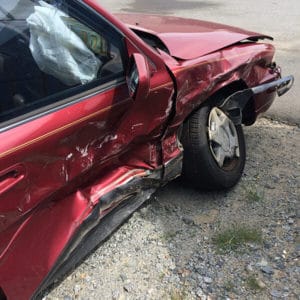What Are the Signs That a Driver Is Impaired?

When driving to a destination, responsible drivers are always aware of their surroundings and evaluating the conditions of the road. Impaired drivers, whether under the influence of drugs or alcohol, on the other hand, are often unaware of what’s happening around them and have a higher chance of putting others at significant risk for harm by causing a car accident. In order to protect yourself from intoxicated drivers, it’s crucial to understand how substances affect the brain and be able to recognize the telltale signs of impairment.
How Drugs and Alcohol Affect the Brain
While the signs of impairment are often similar if a driver is on drugs or has consumed an excessive amount of alcohol, the ways in which these substances affect the brain differs. The type of drug or the amount of alcohol can worsen impairment symptoms. Understanding how the brain is affected may discourage drivers from operating their vehicles under the influence.
Drugs interfere with the way neurons process, send, and receive signals. While some drugs like heroin or marijuana activate neurons because of their chemical structures and send abnormal messages to the brain, others like cocaine or amphetamine, can interfere with the communication between neurons. In general, the central nervous system and autonomic functions like respiration, blood pressure, and body temperature are impacted.
The way in which alcohol affects the brain and body depends on the blood alcohol concentration (BAC). In general, two or three drinks in an hour increased the BAC by 0.1 percent. This fluctuates depending on body weight, age, gender, and more. In general, a standard drink would be 12 ounces of beer, eight ounces of malt liquor, five ounces of wine, or 1.5 ounces of hard liquor. The legal limit to drive is below 0.08 percent.
At 0.02 percent, a person is likely to feel warmed and may be more inclined to make poor judgments. When the BAC reaches 0.05 percent, people are likely to speak louder, make more gestures, and lose control of small muscles. Vision may become blurry. At 0.08 percent, coordination, balance, reaction times, and speech are seriously impacted. Memory may also be impaired. When a person’s BAC reaches 0.1 percent, coordination of the arms and legs is poor, reaction time is reduced, and speech will be significantly slurred. At 0.2 percent, blackouts are possible. When the body reaches a BAC of 0.4 percent or higher, sudden death is possible.
Signs of Impairment
According to the National Highway Traffic Safety Administration (NHTSA), there are a number of ways to identify impaired drivers. Law enforcement officials often look for these specific signs to determine if they suspect a driver is under the influence of alcohol or drugs.
Lane Position Problems
When impaired, maintaining proper lane position can be challenging. As a result, drunk drivers may weave. This means that the vehicle drifts from one side of the lane to another. In extreme instances, the vehicle may cross lane lines before a correction can be made. Drifting is also a lane position issue. This occurs when a vehicle will move in a generally straight line, but at an angle. Swerving and becoming unusually close to a stationary or moving object may also happen when a driver is impaired.
Speeding and Braking Inconsistencies
Responsible drivers are able to maintain a consistent speed and follow the posted signs. A drunk driver, however, is likely to accelerate and decelerate rapidly, drive ten or more miles per hour under the limit, or vary speeds frequently. Proper braking can also be difficult for an impaired driver. Problems include abrupt stops, stopping too far from a curb, stopping at an incorrect angle, or stopping too short or beyond a limit.
Vigilance Problems
These issues are in regard to a driver’s ability to notice changes in surroundings and pay attention to the task of driving. Impaired motorists might forget to turn on their headlights, neglect to signal their turns or signal incorrectly, drive into crossing or opposing traffic, or drive the wrong way on a one way street. Overall, response times are significantly slowed.
Poor Judgement
A driver’s job is to continuously make judgment calls that do not put other’s in harm’s way. Alcohol and drugs impair this ability. Someone who is under the influence might tailgate, make unsafe lane changes, turn improperly, or drive on pavement that is not designated as a roadway.
In addition to the driving behaviors, an impaired person behind the wheel is likely to grip the steering wheel tightly, lean forward or slouch in their seat, drive with their face close to the windshield, and stare straight ahead.
Unfortunately, even the most cautious individuals may find themselves the victim of an impaired driver’s poor choices. If you or a family member have been injured, our lawyers are here to provide you with the guidance and support you need to hold the negligent party accountable for their actions. Contact us today for more information.










